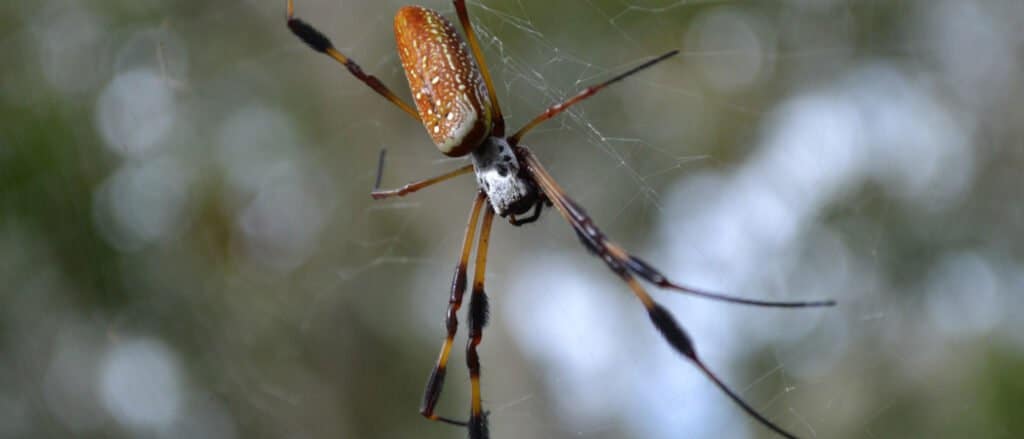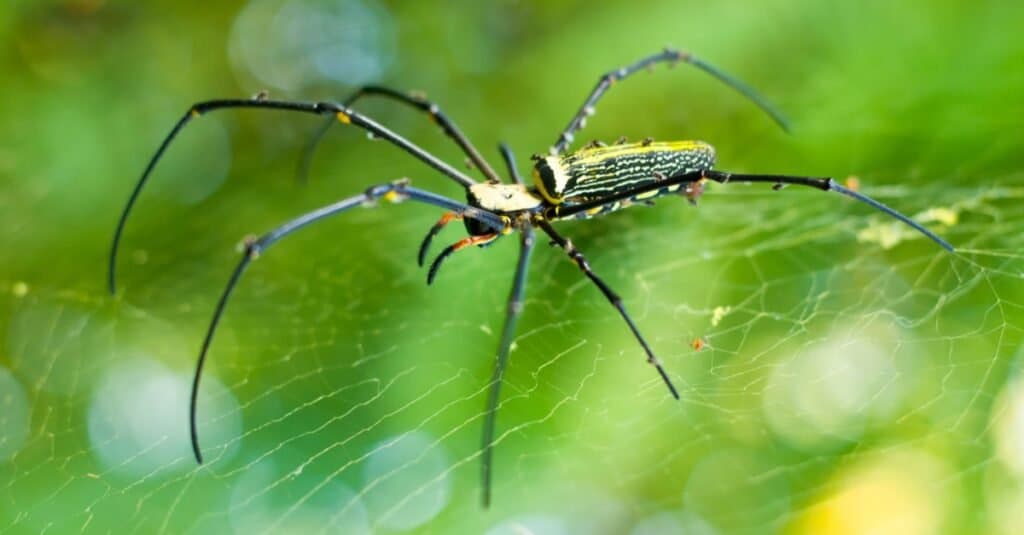There are different types of spiders in the world that are often referred to as banana spiders. In case you’re wondering why, it’s because they all have one thing in common – a connection to the banana fruit. I believe that’s quite obvious. While some spiders take the name because of their body shape or color, others are called banana spiders because they appear in boxes or shipments of bananas. Texas is home to almost 900 species of spiders, and banana spiders are one of the common species in the state.
This article focuses on Banana Spiders in Texas and how you can distinguish them from other spiders in Texas.
Banana Spiders
As said earlier, banana spider may refer to different species of spider in different areas of the world. Types of banana spiders include, but are not limited to, the following species:
- Golden silk orb-weaver (Nephila) is a brightly colored spider found in North America, Asia, and Africa (including Madagascar).
- The Brazilian wandering spider (Phoneutria), also called the armed spider, is a venomous, highly dangerous spider found in Central and South America.
- Argiope appensa is a black and yellow spider native to several islands in the Western Pacific Ocean.
- Cupiennius, a South and Central American genus of spiders.
Where are Banana Spiders Found?

Banana spiders are widespread in warmer regions worldwide, including Australia, Asia,
Africa
, and America.
©Natalie Gail/Shutterstock.com
Golden silk orb-weavers or Golden orb-weavers (Nephila genus) are banana spiders widespread in warmer regions worldwide, including Australia, Asia, Africa, and America. In the United States, they’re predominantly found in the southeastern states, from Texas to North Carolina. These spiders are called banana spiders because they love to hide among banana leaves and boxes. They have a general preference for warm and reasonably wet climates. Golden orb weaver spiders prefer warm habitats and areas of high humidity with some leaf cover.
Banana spider webs are quite large, so these spiders often set up webs around sturdy structures for support. Therefore, you can find a banana spider and its web between buildings or trees. They are also found in forest areas along trails, at clearing edges of woodland paths and near bodies of water. Spiders generally look to set up webs in areas that insects will regularly fly through, such as in relatively dense vegetation or even in urban environments with a large prey concentration.
How to Identify Banana Spiders in Texas

Banana spiders have colorful bands and tufts of hair on their long, skinny legs adapted for weaving.
©makuromi/Shutterstock.com
Banana spiders in Texas, i.e., Golden orb-weavers, are best identified by the female’s large size and colorful patterns and the bright golden color of their intricate web in the sunlight. Females of this species have a more striking appearance because they’re much larger than their male counterparts and have a slender yellow and white abdomen on cylindrical bodies. They also have colorful bands and tufts of hair on their long, skinny legs adapted for weaving. Males are brown and often share a web and, thus, food with the females since they can’t weave their own webs after maturity.
Golden silk orb-weavers are similar in appearance to Joro spiders, also found in Texas. However, there are differences between them. Joro spiders have red markings on their body which are absent in Golden silk orb-weavers. Also, even though they both weave complex webs, Joro spiders can make larger webs, sometimes reaching up to 10 feet wide! Female Golden orb-weavers grow to about 1.5 – 3 inches long (not including leg span), while males are usually two-thirds smaller, less than an inch in length.
Banana Spider Web
Nephila spiders, also called Golden orb-weavers, are popular for their unique web — large, strong and intricately designed. Nephila is a Greek word meaning “fond of spinning,” which is not surprising, seeing that these spiders can weave webs up to 3 feet across. Females of this species have different types of silk glands that can create strong and complex webs. In fact, the webs can be so strong that it can be hard to get off the face if someone accidentally walks into one.
A study published in Nature Genetics discovered that silk produced by the Golden silk orb-weaver spider is stronger than Kevlar, a type of fiber used to make bulletproof vests. Another interesting characteristic is how banana spiders can adjust the hue of their webs according to the local sunlight conditions to catch prey by surprise.
Golden silk orb-weaver spiders are known to build golden-colored webs in open areas between trees – hence their name. They are very easy to recognize in the daytime in the woods because they often reflect a bright golden color in the sunlight. Several efforts have been made to produce garments from the strong Nephila silk; however, none are commercially viable yet.
What Do Banana Spiders Eat?

ome banana spiders are so big that they can eat larger animals like lizards, mice, and even small snakes.
©Dave Montreuil/Shutterstock.com
Banana spiders usually eat small to medium-sized flying insects, such as mosquitoes, butterflies, flies, grasshoppers, beetles, bugs, moths, and wasps. In some cases, they are known to eat larger animals like birds and snakes. These spiders feed on prey wrapped in their silk and may sometimes catch prey in a part of their web to be eaten later. Some banana spiders are so big that they can eat larger animals like lizards, mice, and even small snakes.
Are Banana Spiders in Texas Dangerous?
Banana spiders in Texas are not dangerous to humans, so there’s not much to worry about. Nephila spiders, including the Golden silk orb-weaver, usually won’t bite unless poked or threatened, so bites occur when the spider is held or pinched. Their bite is not likely harmful to healthy humans because they have a mild venom only for prey. Pain and redness may occur, but these symptoms usually disappear quickly, so no hospital treatment is required.
Though the bite of this spider is painful, it is about as painful as a wasp sting and even less than a bee sting. However, a particularly dangerous spider referred to as a banana spider is the Brazilian wandering spider of the Phoneutria genus. Bites from this spider can be extremely painful, and victims often experience drooling and heavy sweating, with the skin around the bite appearing reddish and swollen and even getting hot. Luckily, this spider is not typically found in Texas.
The photo featured at the top of this post is © Dave Montreuil/Shutterstock.com
Thank you for reading! Have some feedback for us? Contact the AZ Animals editorial team.






